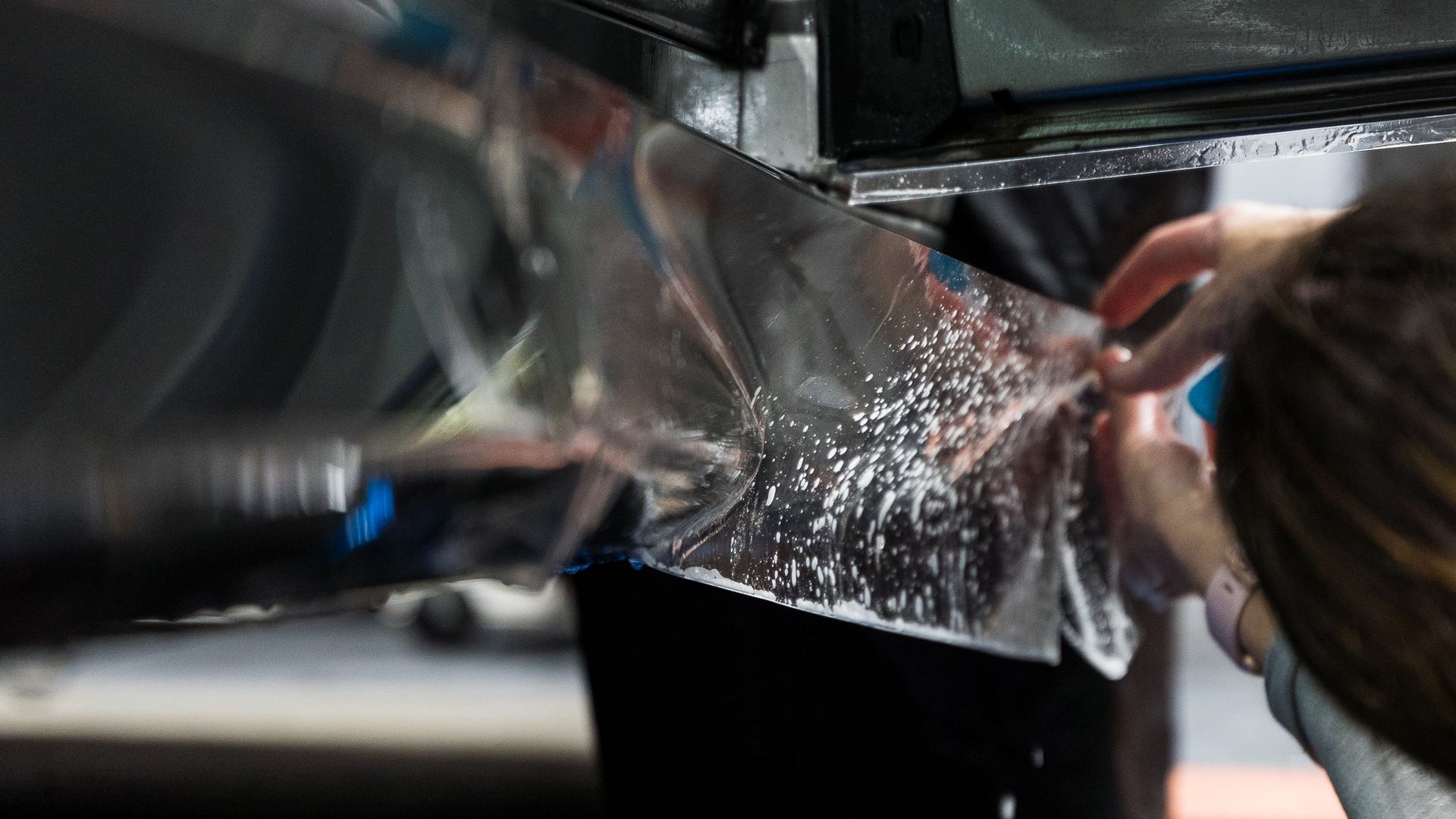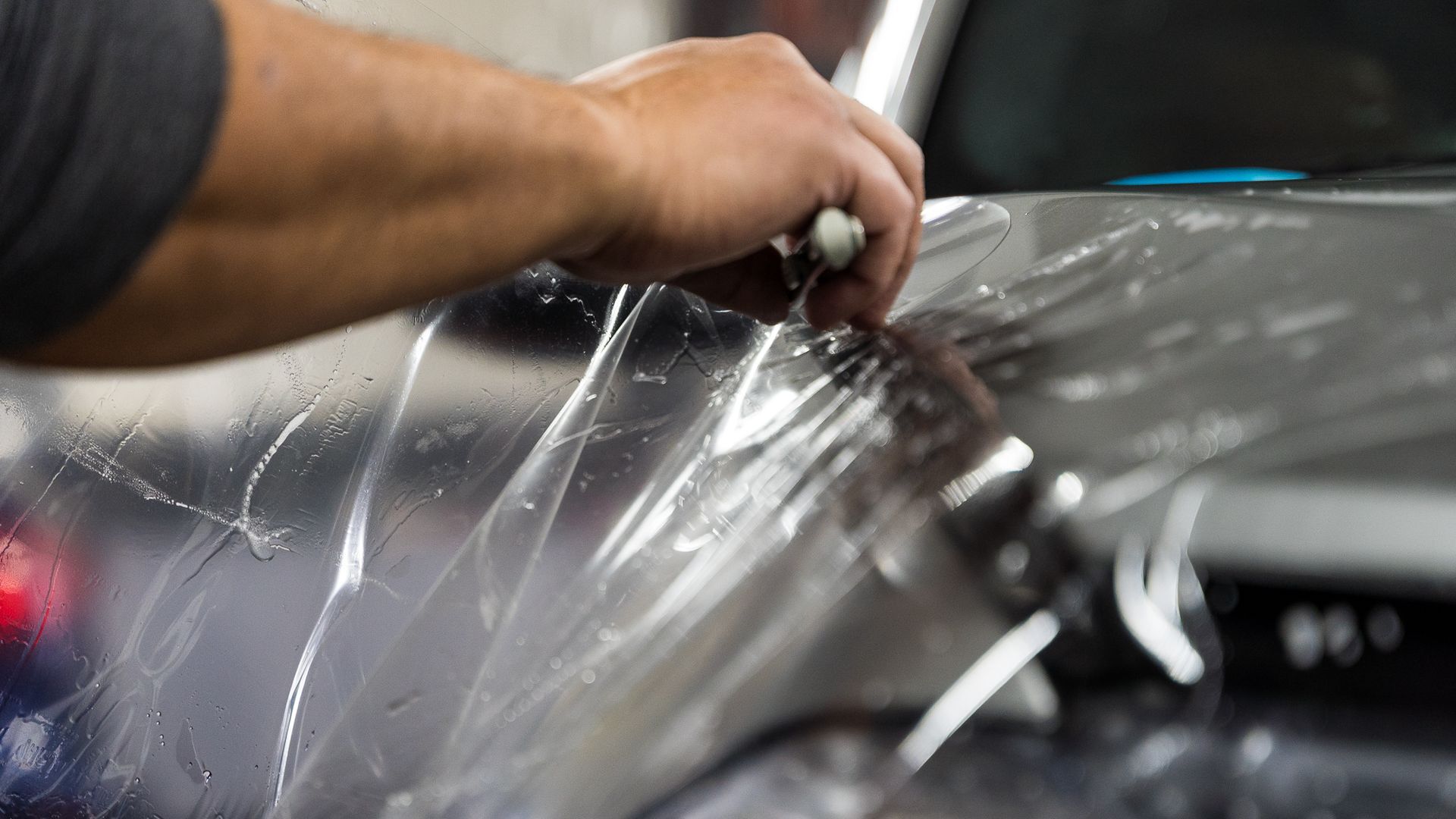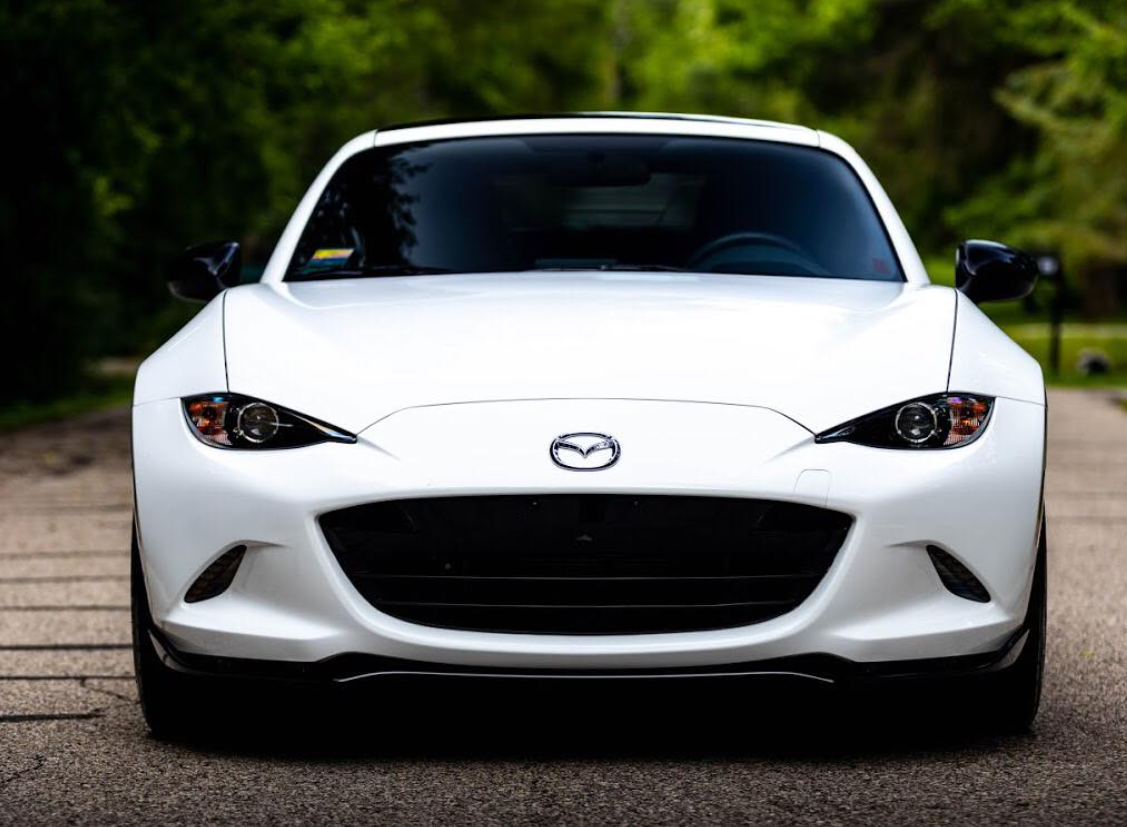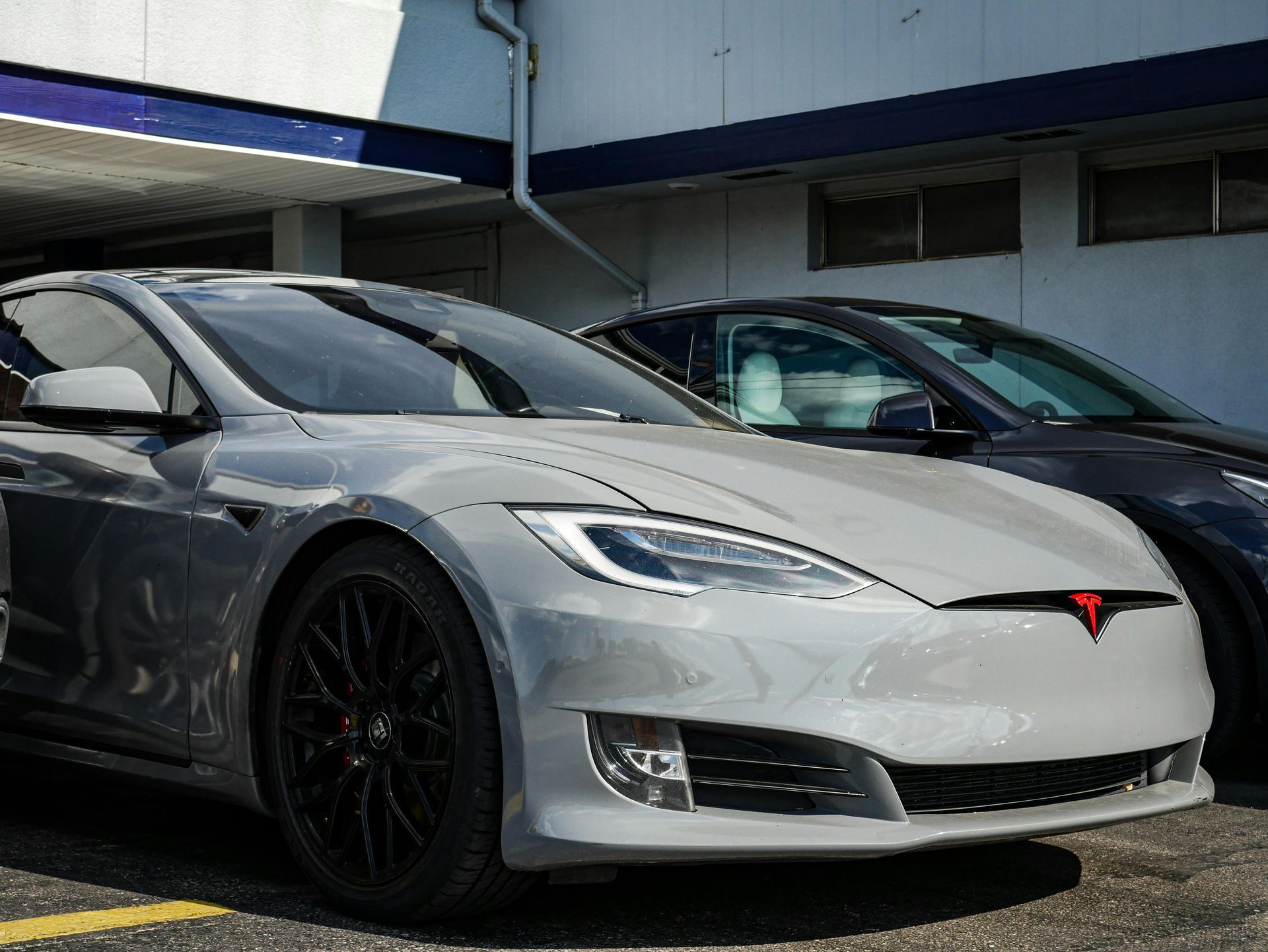Maintaining the Integrity of PPF: Essential Tips for High-Heat Environments
BOOK NOWKeeping your vehicle in pristine condition is more than just a hobby; it's a testament to your dedication and passion for automotive excellence. Paint protection film is a modern marvel that shields your car's paint from debris, scratches, and environmental damage—preserving its showroom shine even on the harshest roads. But what happens when you live in an environment where scorching temperatures push boundaries daily? High heat can put significant stress on your paint protection film, causing it to peel, discolor, or bubble if not properly maintained.
To maintain the integrity of your vehicle’s paint protection film in high-heat environments, it is essential to regularly clean the surface to prevent contaminants from impeding its self-healing properties and to park in shaded areas whenever possible. Additionally, using UV protectants specifically designed for paint protection films can help prevent damage from prolonged sun exposure and keep the film looking optimal.
PPF Overview: Composition and Benefits
At the core of paint protection film lies its robust composition, primarily crafted from thermoplastic urethane. This material is designed to be clear, allowing it to seamlessly blend with a vehicle's paint while providing a durable protective layer against various environmental threats. One of the standout features of a paint protection film is its self-healing property. When minor scratches occur—perhaps from rogue road debris or careless car wash brushes—this self-healing mechanism activates through heat. A gentle application using a heat gun or simply parking your car in the sun can make those unsightly marks disappear almost as if they were never there. This not only enhances aesthetic appeal but also reduces the need for extensive repairs or touch-ups over time.
The transition from military usage to civilian applications highlights how effective paint protection film has become in preserving automotive beauty. Initially developed to protect helicopter blades, today's paint protection film safeguards vehicles like luxury cars and everyday drivers alike from wear and tear. Car owners who live in areas with heavy road debris or harsh weather conditions find that their car paint remains unmarred, requiring less frequent detailing. There’s also a sense of peace knowing the investment made in a vehicle is being protected effectively. Beyond just maintaining the appearance, the installation of paint protection film can save money in the long run. By averting costly repaint jobs or extensive repairs due to chips and scratches, paint protection film represents a smart choice for anyone serious about preserving their vehicle's value.
Impact of Extreme Temperatures on PPF
In environments where heat levels soar, a paint protection film can undergo remarkable changes that directly impact its performance and longevity. The adhesive that binds the film to the vehicle does not fare well when subjected to continuous high temperatures; in fact, it starts to lose its adhesive properties at around 150°F. This loss can manifest as peeling along the edges, which might seem trivial initially but can lead to more significant issues over time, such as bubbling or discoloration. Imagine driving through a blazing desert where surface temperatures regularly exceed 160°F; under these conditions, a paint protection film adheres poorly and can degrade at an alarming rate.
Such experiences serve as a cautionary tale about the impact of extreme heat on PPF. When choosing paint protection film for cars frequently exposed to intense sunlight or high ambient temperatures, it's vital to select films specifically designed to withstand these stressors. Fortunately, advancements in technology mean there are more options available now than ever before. A key takeaway from industry research shows that prolonged exposure to temperatures above 180°F can accelerate this degradation process even further, jeopardizing both appearance and functionality. Therefore, monitoring environmental conditions and choosing appropriate materials will be essential steps in ensuring your PPF's performance remains uncompromised under heat stress.
Choosing Heat-Resistant PPF Materials
When it comes to protecting your vehicle in extreme environments, not all paint protection films are equal. Some products are specifically engineered to endure higher temperature ranges, ensuring they retain functionality and aesthetics over time. For example, reputable brands are known for their remarkable ability to resist the damaging effects of UV rays and chemical exposure under heat, making them excellent choices for vehicles frequently exposed to the sun.
One of the key factors when selecting a heat-resistant paint protection film is understanding its thermal tolerance. High-quality products can handle temperatures up to 200°F, which is critical in maintaining their adhesion, clarity, and overall finish during prolonged exposure. These products are highly effective thanks to their impressive UV protection capabilities. When assessing your options, consider not only the temperature ratings but also how each product responds over time when facing these stresses.
Effective Installation Techniques
Proper installation of paint protection film is not just about slapping it on; it’s a meticulous process that ensures durability, especially in hot environments.
- Surface Preparation: The first crucial step involves surface preparation. Take your time to clean the vehicle's surface thoroughly, ensuring all dirt, wax, and grease are removed. A mix of quality car shampoo and isopropyl alcohol can work wonders here; you want the surface to be as clean as a whistle. This cleanliness helps the film adhere properly, preventing any unsightly bubbles or peeling down the line. As you prepare the surface, pay attention to details like unseen contaminants. Often overlooked, these tiny particles can wreak havoc on adhesion. A clay bar treatment before applying paint protection film can eliminate any minute contaminants that washing alone might miss.
- Application Environment: Now, the environment where you install your paint protection film plays a pivotal role. Aim for a shaded and cool area for optimal results, avoiding direct sunlight, which can cause the adhesive to activate prematurely, leading to misalignment issues. If you're DIY-ing this project, mid-day temperatures can be particularly harmful, so try working early in the morning or later in the evening when it's cooler outside. However, be mindful of temperature guidelines; installing in conditions below 60°F can lead to poor adhesion as well. This fine balance is crucial for achieving that flawless finish.
- Handling of PPF: When it comes to applying the film, employing a wet application method allows greater maneuverability during installation and reduces the chances of bubbles forming beneath the surface. Prepare a soap-water mixture in a spray bottle and generously spritz both the adhesive side of the film and the vehicle's surface before applying it. This step allows you to slide the film into place before it adheres completely—like giving yourself a second chance if things don't line up on first contact! After positioning the film correctly, use a squeegee with a soft edge to push out excess water and air from underneath it carefully. Be gentle yet firm; you don’t want to stretch or tear the material.
With these effective installation practices under your belt, understanding how to maintain this protection will further ensure its longevity and performance over time.
Maintaining Paint Protection Film Longevity
When it comes to maintaining the longevity of paint protection film, consistent and thoughtful upkeep plays a pivotal role. The integrity of a paint protection film hinges on understanding its unique properties and how environmental factors affect its performance. With the right approach, you can significantly prolong its lifespan while preserving your vehicle’s aesthetics.
To start, regular washing is fundamental. It's not enough to just run water over the surface; instead, choosing a pH-neutral soap ensures that you won’t inadvertently compromise the film's protective qualities. Using abrasive materials can lead to micro-scratches, which diminish clarity and allow harmful elements to penetrate through the film. Thus, opting for soft microfiber towels or sponges will help maintain that appealing gloss your vehicle deserves. Additionally, drying your car thoroughly is crucial, as water spots can form and mar the visual appeal of your paint underneath.
Another significant aspect to consider is the impact of ultraviolet (UV) rays on paint protection films. High-heat environments exacerbate wear and tear, so avoiding direct sunlight when possible is highly advisable. Parking in shaded areas or using car covers can greatly reduce UV exposure, keeping both the film and the paint beneath in optimal condition. Bi-annually, applying UV protectant sprays can also enhance the film's resilience against fading and cracking. These sprays create an extra layer of shield that defends against harsh environmental elements. The benefits of this routine maintenance can save you money down the line since timely interventions prevent extensive damage that leads to costly repairs or replacements.
In addition, regularly checking for signs of distress can significantly contribute to maintaining your paint protection film. Keep an eye on lifts or bubbles around the edges of the film and look out for discoloration or changes in texture. It is also recommended to perform a thorough inspection after washing to catch early signs of wear. Additionally, a professional inspection can help identify issues early before they become a significant problem.
Assessing PPF Performance
To effectively gauge the performance of your paint protection film, you need to be vigilant about spotting signs that suggest it might not be functioning optimally. Discoloration is often the first noticeable change; faded areas can indicate UV damage from prolonged exposure to sunlight. Additionally, peeling edges or bubbles forming beneath the surface are clear indicators that the adhesive isn’t holding up as it should. These issues should prompt immediate attention, as they can worsen if left unchecked.
It's important to consider the self-healing capabilities of your film. Many modern paint protection films feature self-healing technology, which allows minor scratches to disappear with heat exposure. However, if you notice that scratches are becoming more pronounced or aren't disappearing after a heat application, it could signify that your film has lost its effectiveness. This aspect of paint protection film should be monitored closely to determine whether replacement or professional maintenance is necessary.
Engaging a professional for biannual assessments is particularly beneficial, as these specialists bring expertise and precision to the evaluation process. They can identify potential problems before they escalate into significant issues and carry out minor repairs or replacements without a hassle. For vehicles frequently exposed to outdoor conditions, adopting a more proactive approach with quarterly inspections can greatly extend the lifespan of your paint protection film while enhancing its protective functions.
If your PPF exhibits any signs of premature wear, consult your warranty documentation. Many reputable manufacturers provide warranties covering defects in their products, offering peace of mind and alleviating costs associated with repairs or replacements. Remember: proactive assessment is key. Timely evaluations ensure your paint protection film remains intact and help you safeguard your investment by preserving both the vehicle's aesthetic and overall value. Observing these tips will maximize the protective qualities of your paint protection film while maintaining its appearance over time—an essential step for anyone looking to keep their vehicle in top condition despite the challenges presented by harsh environments.
Incorporating regular assessments and timely maintenance will enhance the longevity of your paint protection film, ensuring that it continues to deliver optimal protection against environmental factors.
Top Paint Protection Film Installers in Stewartville, MN
For outstanding protection and flawless installation, trust Five Star Automotive Detailing, the top paint protection film installers in Stewartville, MN. Our expert team is committed to delivering superior results with precise application techniques and high-quality materials that safeguard your vehicle's paint from damage and wear. Ensure your car maintains its pristine condition with our professional paint protection solutions. Contact us today to schedule your installation and discover the benefits of top-tier protection. Call us at 507-213-3561 to get started!










